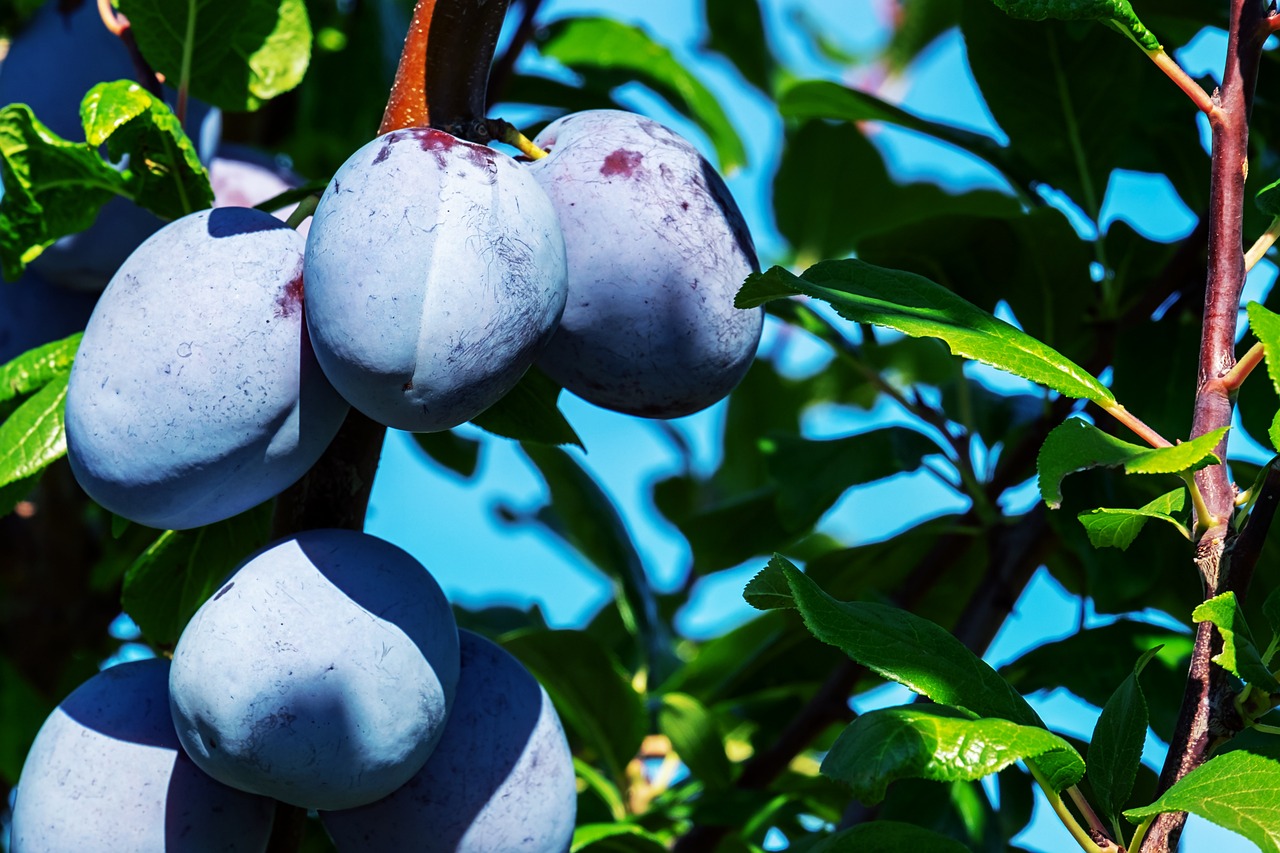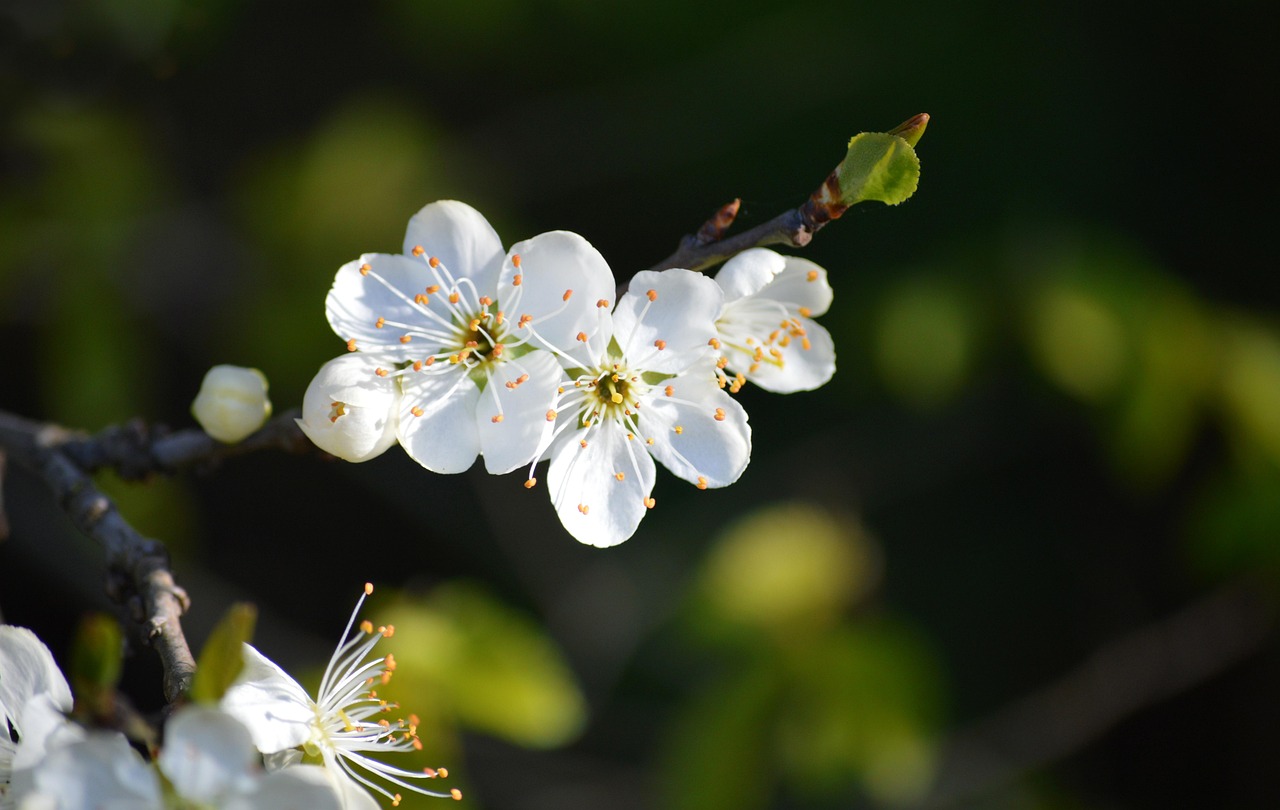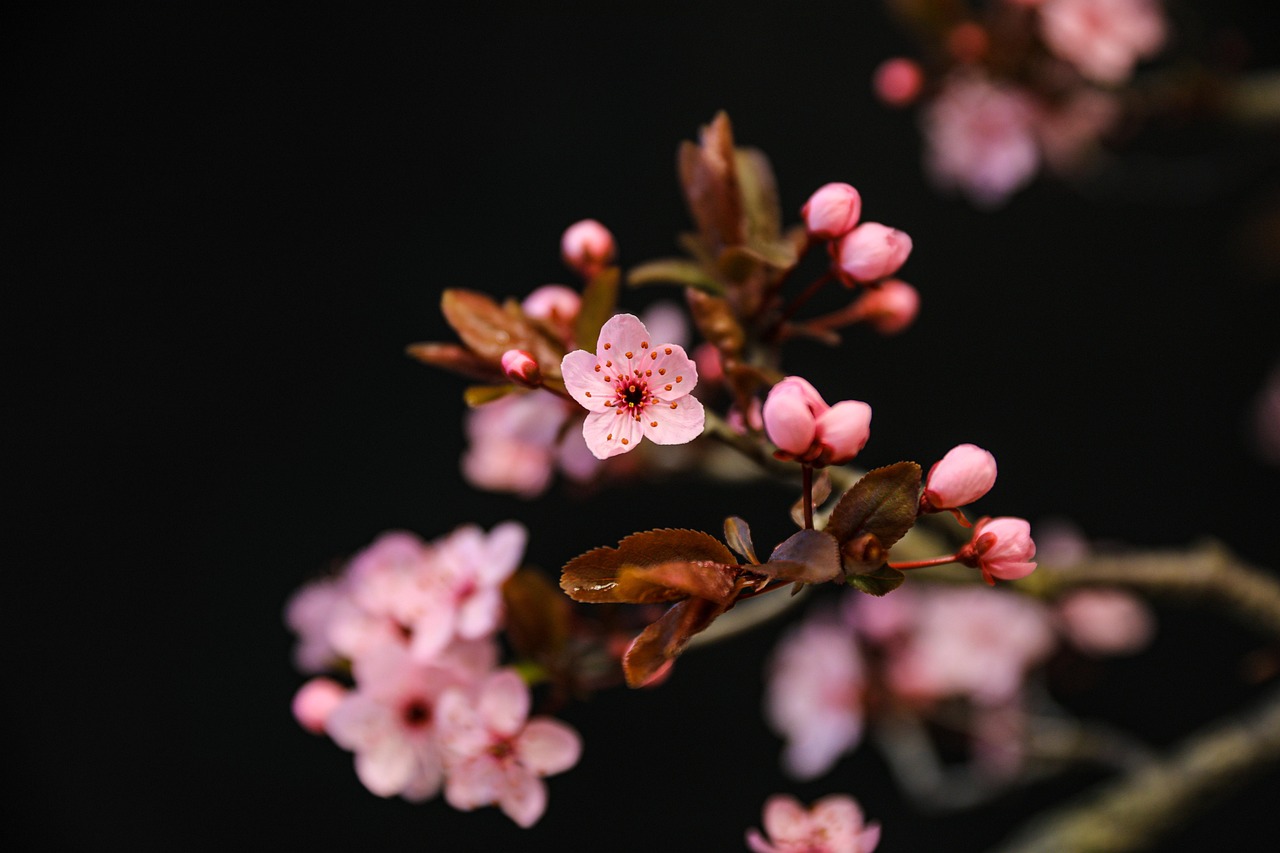Plum trees typically grow at a moderate rate, averaging 1 to 2 feet per year. Effective disease management is crucial for healthy growth, involving proper care, pest control, and timely interventions to prevent common issues like plum curculio and brown rot.
Plum trees are popular fruit-bearing plants that provide delicious fruits and beautiful blossoms. They belong to the genus Prunus and can vary significantly in size and shape. Understanding their growth rate is essential for gardeners and orchardists. It helps in planning pruning schedules, space allocation, and overall care practices. Additionally, effective disease management is vital for ensuring the health and productivity of plum trees. Without proper attention, these trees can succumb to various diseases and pests that threaten their growth and fruit production.

The growth rate of plum trees depends on several factors including the variety of the tree, soil quality, climate conditions, and cultivation practices. On average, most plum trees grow between 1 to 2 feet each year after they reach maturity. Young trees may initially grow faster as they establish their root systems. Here are some common factors affecting their growth rates:
- Soil Quality: Well-drained, fertile soil promotes healthy root development.
- Watering: Consistent moisture is essential, especially during dry spells.
- Sunlight: Plum trees thrive in full sun, receiving at least six hours of sunlight daily.
- Fertilization: Regular feeding with suitable fertilizers enhances growth.
Understanding Plum Tree Growth
The growth of plum trees can be categorized into different stages: juvenile, mature, and declining. Each stage has unique characteristics and care requirements. During the juvenile stage, which lasts for the first few years, trees focus on establishing a strong framework of branches and roots. This period is critical for long-term success.
Once a plum tree reaches maturity, it may start producing fruit typically within three to six years after planting. Proper care during this stage includes regular watering, pruning to shape the tree, and monitoring for pests and diseases. Mature trees can produce fruit for several decades if maintained properly.

Common Diseases Affecting Plum Trees
Despite their hardiness, plum trees are susceptible to various diseases that can hinder their growth and fruit production. Understanding these diseases is crucial for effective management. Some common diseases include:
| Disease | Description | Management Strategies |
|---|---|---|
| Plum Curculio | A destructive pest that feeds on fruit buds and causes deformities. | Use insect traps and apply insecticides when necessary. |
| Brown Rot | A fungal disease that causes fruit to rot on the tree. | Remove infected fruit and maintain good air circulation. |
| Powdery Mildew | A fungal infection characterized by a white powdery coating on leaves. | Apply fungicides and ensure proper spacing between trees. |
| Cytospora Canker | A fungal disease that leads to cankers on branches. | Prune affected areas and maintain tree health through proper care. |
Regular monitoring and early intervention contribute significantly to disease management in plum trees. Gardeners should inspect their trees frequently for any signs of disease or pest infestations. Identifying issues early can prevent severe damage and improve overall tree health.
In addition to monitoring for diseases, implementing good cultural practices is essential for promoting healthy growth. These practices include proper watering techniques, mulching to retain moisture, and ensuring adequate nutrient supply through organic or synthetic fertilizers. Each of these elements plays a role in keeping plum trees robust against various threats.

With a solid understanding of plum tree growth rates and effective disease management strategies in place, gardeners can enjoy bountiful harvests year after year. Careful attention to these aspects ensures that plum trees not only survive but thrive in varied conditions.
Factors Influencing Plum Tree Growth Rate
The growth rate of plum trees is influenced by various environmental and management factors. Understanding these factors can help gardeners optimize growth conditions and ensure healthy trees. Here are some key elements that affect the growth rate of plum trees:
- Climate: Plum trees thrive in temperate climates. They require a chilling period during winter, which is essential for flower bud development.
- Soil Type: The ideal soil for plum trees is sandy loam, which provides good drainage and fertility. Heavy clay soils can impede root growth.
- Water Availability: Consistent moisture is critical, especially during the growing season. However, overwatering can lead to root rot.
- Nutrient Levels: Adequate nutrients, particularly nitrogen, phosphorus, and potassium, are essential for optimal growth and fruiting.
- Pest and Disease Pressure: High levels of pests or diseases can significantly slow down growth and affect overall tree health.
Optimal Growing Conditions
To achieve the best growth rates for plum trees, it is vital to create optimal growing conditions. Below are some recommended practices to enhance growth:
- Select the Right Variety: Choose plum varieties that are well-suited to your local climate and soil conditions.
- Proper Planting: Plant trees at the right depth, ensuring that the graft union is above the soil line. This promotes healthy root development.
- Mulching: Apply mulch around the base of the tree to retain moisture and suppress weeds. Organic materials like wood chips or straw work well.
- Regular Pruning: Prune trees annually to remove dead or diseased wood and to shape the tree for better sunlight exposure.
- Water Management: Utilize irrigation systems during dry spells, aiming for deep watering that encourages strong root growth.
Pest Management Strategies
Pests can be a significant threat to plum trees, affecting their growth and fruit yield. Effective pest management is crucial for maintaining healthy trees. Here are some common pests that affect plum trees along with strategies to manage them:

| Pest | Description | Management Techniques |
|---|---|---|
| Plum Curculio | A beetle that lays eggs in developing fruit, causing premature drop. | Implement insect traps and apply appropriate insecticides during the flowering stage. |
| Aphids | Small insects that feed on plant sap, weakening the tree. | Encourage beneficial insects like ladybugs or use insecticidal soap if infestations become severe. |
| Spider Mites | Tiny pests that cause stippling on leaves and can lead to defoliation. | Maintain humidity around the tree and use miticides if needed. |
| Scale Insects | Insects that attach themselves to branches and suck sap, leading to stress. | Use horticultural oil during dormancy to control populations. |
Monitoring for these pests regularly can help in early detection and management. Creating a diverse garden environment with beneficial plants can also attract natural predators, reducing pest populations.
Cultural Practices for Pest Control
Cultural practices play a vital role in managing pests effectively. Some recommended practices include:
- Crop Rotation: Avoid planting plum trees or related species in the same area repeatedly to break pest life cycles.
- Sanitation: Remove fallen fruit and debris from around the tree to reduce pest habitats.
- Companion Planting: Plant companion plants that repel pests or attract beneficial insects nearby.
- Avoid Over-Fertilization: Excessive nitrogen can lead to lush foliage that attracts pests, so fertilize judiciously.
By implementing these strategies, gardeners can enhance pest management efforts while promoting healthy growth in plum trees. Taking proactive steps ensures that trees remain vigorous and productive throughout their lifespan.
Disease Prevention Techniques
Preventing diseases is just as important as managing pests. Adopting disease prevention techniques can significantly improve the resilience of plum trees. Key strategies include:
- Proper Spacing: Ensure adequate spacing between trees to allow for air circulation, which helps prevent fungal infections.
- Cleansing Tools: Sanitize pruning tools between cuts to reduce the risk of spreading diseases.
- Fungicide Applications: Apply fungicides as preventive measures during high-risk periods, particularly before blooming.
- Soil Management: Test soil pH and amend as needed. The ideal pH for plum trees is between 6.0 and 7.0.
Maintaining a focus on disease prevention not only protects plum trees but also enhances their growth rates and overall health. Adopting an integrated approach helps ensure that gardeners can enjoy fruitful harvests year after year.
Fertilization and Nutrient Management
Proper fertilization and nutrient management are essential for promoting the growth and health of plum trees. Providing the right nutrients at the right time can improve fruit quality and yield. Here are some key considerations regarding fertilization:
Nutrient Requirements
Plum trees require several essential nutrients for optimal growth. The primary macronutrients include:
- Nitrogen (N): Promotes healthy leaf and shoot growth.
- Phosphorus (P): Supports root development and flower formation.
- Potassium (K): Enhances fruit quality and helps the tree withstand stress.
In addition to macronutrients, trace elements such as calcium, magnesium, and iron are also important for overall tree health. An imbalance or deficiency in any of these nutrients can lead to poor growth and increased susceptibility to diseases.
Soil Testing
Before applying fertilizers, it is beneficial to conduct a soil test. Soil testing provides valuable information about nutrient levels, pH, and organic matter content. Based on the results, gardeners can tailor their fertilization strategies effectively. Here are steps to follow:
- Collect Soil Samples: Take samples from different areas of the planting site to get a representative analysis.
- Send Samples to a Lab: Use a reputable laboratory for accurate results.
- Review Recommendations: Follow the lab’s recommendations for fertilizer type and application rates.
Types of Fertilizers
There are various types of fertilizers that can be used for plum trees. They can be categorized into organic and synthetic options:
| Type of Fertilizer | Description | Examples |
|---|---|---|
| Organic Fertilizers | Derived from natural sources, these improve soil health over time. | Compost, well-rotted manure, bone meal. |
| Synthetic Fertilizers | Manufactured chemical fertilizers that provide immediate nutrients. | Urea, ammonium nitrate, triple superphosphate. |
When choosing fertilizers, it is crucial to consider the specific nutrient needs of plum trees at different growth stages. Young trees may require more nitrogen to support rapid growth, while mature trees may benefit from balanced fertilizers that include phosphorus and potassium during flowering and fruiting periods.
Irrigation Practices
Irrigation is another critical factor in maintaining healthy plum trees. Proper watering practices help promote vigorous growth and prevent stress. Here are some guidelines for effective irrigation:
Watering Techniques
The method of watering can significantly impact the root system and overall health of plum trees. Some common techniques include:
- Drip Irrigation: A highly efficient method that delivers water directly to the root zone, reducing evaporation and runoff.
- Soaker Hoses: These hoses allow water to seep out slowly along their length, providing consistent moisture to the soil.
- Sprinkler Systems: Useful for larger orchards but should be adjusted to minimize water on the foliage to prevent fungal diseases.
Watering Frequency
The frequency of watering will depend on several factors, including soil type, weather conditions, and tree age. Generally, young trees require more frequent watering than established trees. Here are some general guidelines:
- Young Trees: Water deeply once a week during dry spells.
- Mature Trees: Water every two weeks or as needed during hot weather.
- Soil Moisture Check: Regularly check the soil moisture level by sticking a finger into the soil; if it feels dry an inch down, it’s time to water.
Pruning Techniques for Healthy Growth
Pruning is an essential practice for maintaining the shape and health of plum trees. Proper pruning encourages better air circulation, sunlight penetration, and overall growth. Below are some important aspects of pruning plum trees:
When to Prune
The best time to prune plum trees is during their dormant season, typically late winter or early spring before new growth begins. Pruning in this period minimizes stress on the tree and reduces the risk of disease transmission.
Pruning Techniques
A few key techniques can help ensure effective pruning:
- Crown Thinning: Remove some interior branches to allow light to reach the center of the tree.
- Crown Raising: Remove lower branches to create space underneath the tree for maintenance and access.
- Crown Reduction: Shorten branches that have grown too long to maintain a balanced shape.
Following these pruning techniques can enhance air flow around the leaves and fruit, decreasing the likelihood of fungal infections while promoting healthy growth.
Pest and Disease Monitoring
An essential aspect of successful plum tree cultivation is the ongoing monitoring for pests and diseases. Regular checks can help detect problems early, allowing for prompt management actions that can save trees from severe damage. Here are some strategies for effective monitoring:
Visual Inspections
Conducting regular visual inspections of plum trees is crucial. Gardeners should look for the following signs:
- Leaf Discoloration: Yellowing or browning leaves may indicate nutrient deficiencies or disease.
- Wilting or Drooping: This can be a sign of water stress or root issues.
- Presence of Pests: Check for visible insects or their webs on leaves and branches.
- Fruit Damage: Look for holes, scars, or rot on developing fruit, which can indicate pest activity or fungal infection.
Using Traps
In addition to visual inspections, using traps can help monitor pest populations effectively. Sticky traps and pheromone traps are useful tools for this purpose. They can provide insights into the types and numbers of pests present in the orchard.
Disease Forecasting Tools
Several online tools and local agricultural extension services offer disease forecasting models based on weather conditions. These tools can help predict when conditions are right for specific diseases to develop, allowing for timely preventative measures.
Companion Planting and Biodiversity
Implementing companion planting strategies can benefit plum trees by enhancing biodiversity and creating a more balanced ecosystem. Certain plants can repel pests, attract beneficial insects, or enhance nutrient availability in the soil. Here are some companion plants that work well with plum trees:
- Nasturtiums: These flowers can deter aphids and attract aphid predators.
- Basil: Known to repel certain insect pests while enhancing the flavor of nearby plants.
- Marigolds: These flowers can deter nematodes and other harmful insects.
- Garlic: Acts as a natural pesticide due to its strong scent, which many pests find repellent.
By planting these companion species, gardeners can create a more resilient environment for their plum trees while reducing reliance on chemical treatments.
Utilizing Technology in Plum Cultivation
The advent of technology has brought new tools to enhance the management of plum trees. Here are some technological advancements that can aid in growth rate optimization and disease management:
- Drones: Drones equipped with cameras can provide aerial views of orchards, helping identify areas of stress or pest problems that may not be easily visible from the ground.
- Soil Moisture Sensors: These devices monitor soil moisture levels in real time, enabling efficient irrigation practices that prevent over or under-watering.
- Pest Identification Apps: Smartphone applications can help identify pests and diseases by simply taking a photo, providing immediate assistance in managing issues.
Integrating these technologies into orchard management practices can lead to improved efficiency and better outcomes for plum tree health and productivity.
Conclusion
Cultivating plum trees successfully requires a comprehensive understanding of their growth rates, nutrient needs, pest management, and disease prevention strategies. By implementing effective cultural practices, monitoring for signs of distress, utilizing companion planting techniques, and leveraging modern technology, gardeners can optimize the health and productivity of their plum trees.
The journey from planting to harvest involves careful attention to detail and proactive management strategies. With the right knowledge and tools, plum tree enthusiasts can enjoy fruitful harvests year after year while ensuring the long-term viability of their trees. Investing time in learning about these aspects will yield rewarding results and contribute to the sustainability of plum cultivation.
